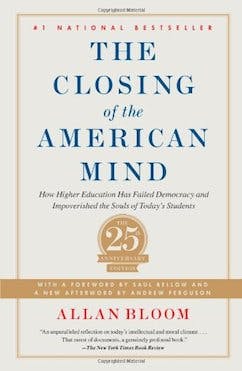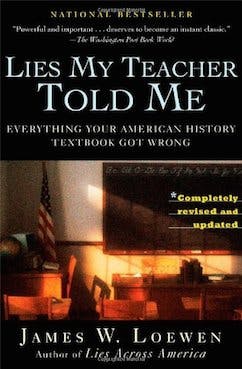Religious freedom bills in Indiana and Arkansas cause a “national uproar.” Supporters of gay rights say they “legislate hate.” The Pro-Life Susan B. Anthony List secures pledges from more than a dozen of the likely Republican presidential candidates to ban abortions after 20 weeks of pregnancy. Pro-choice advocates call the 20-week campaign “deceptive, irresponsible, and dangerous,” yet another provocation in the ongoing GOP “war against women.” A new curriculum framework for teaching Advanced Placement U.S. history becomes “the target of intense criticism around the country.” Conservative critics claim it presents “a radically revisionist view” of “America as a nation of oppressors and exploiters.”
If historian Andrew Hartman is right, all of these recent developments are merely “lingering residues” of the culture wars of the 1980s and 1990s, leftover skirmishes from a battle that has officially ended.The culture wars “are history,” Hartman emphatically declares in the conclusion to his lively new book, A War for the Soul of America. “The logic of the culture wars has been exhausted. The metaphor has run its course.”

Hartman’s conclusion is especially jarring given that he does such a fine job demonstrating that the culture wars were much more than “one angry shouting match after another.” There were “real and compelling” issues behind the incendiary debates about hot button issues such as abortion, affirmative action, and homosexuality as well as evolution, censorship, and the Western canon. Indeed culture wars debates, as Hartman writes, were ultimately about the very “idea of America” itself.
Who and what constituted America was up for grabs in the 1960s. This was the decade that planted the seeds of the culture wars, according to Hartman, through a frontal assault on what he calls “normative America.” Before the ‘60s, the irreverent and unsettling sporadic messages of radical artists, academics, and politicians had largely failed to reach normative Americans, who continued to believe in God, hard work, American exceptionalism (“their nation was the best in human history”), and “traditional” gender roles. During the ‘60s, however, conflict, fracture, and dissent were unavoidable. Cultural disruption was no longer the exclusive province of little magazines, the occasional seminar room, and fringe political parties. With civil rights, anti-war protests, and the flowering counterculture, it was broadcast into American living rooms everyday on the nightly news.
The New Left was the most significant force in terms of reshaping American culture. This “loose configuration” of the antiwar, Black Power, feminist, and gay liberation movements may not have achieved their “utopian political dreams” but they did manage to change hearts and minds, fostering skepticism about the government, drawing attention to deeply entrenched racism, and challenging conventional ideas about gender and sexuality. For many on the Right, this cultural shift was an “abomination,” a loud and public denunciation of their most cherished values and beliefs. Hartman’s overarching argument is that the culture wars should be seen as a right-wing backlash against the ‘60s “cultural revolution.”
The 1970s, in Hartman’s view, were a transitional decade, providing an elaborate training ground for the culture wars to come. This decade saw the rise of neoconservatives, that argumentative faction led primarily by Jewish New York intellectuals—onetime liberals who had been “mugged by reality,” in Irving Kristol’s memorable phrase. In the pages of Commentary, Encounter, and Public Interest, the likes of Kristol, Gertrude Himmelfarb, and Norman Podhoretz formulated a neoconservative platform that attacked affirmative action, the welfare state, and identity politics while promoting colorblind social policies, personal responsibility, and the “fundamental goodness” of America and its institutions.
As neoconservatives “tapped into a powerful American political language that separated those who earn their way from those who do not,” Christian evangelicals began to assert themselves more forcefully in the political arena. More than any other group, according to Hartman, evangelicals had been sent reeling by the '60s, finding themselves “scarred by the acids of modernity.” From his perch at the Thomas Road Baptist Church in Lynchburg, Virginia, Jerry Falwell preached a powerful “family values” gospel, warning that a “holy war” was on for the very survival of the “traditional” family. When Falwell founded his Moral Majority organization in 1979, it enrolled 2.5 million members within its first year.
The “traditional” family was also a fundamental concern of the conservative Catholic Phyllis Schlafly, who spearheaded the anti-Equal Rights Amendment movement, maintaining that if men and women had equal rights, fathers would have no special legal obligation to provide for mothers and their children. Schlafly, as Hartman emphasizes, successfully “tarred feminists as enemies of motherhood,” renegades who saw domesticity as a form of slavery. Passed by Congress in 1972, the ERA ultimately fell just shy of the 38 states needed for ratification, due in no small measure to Schlafly’s STOP ERA campaign. In a 1973 debate, iconic second wave feminist Betty Friedan told Schlafly: “I would like to burn you at the stake. I consider you a traitor to your sex, an Aunt Tom.”
We should pay attention to Friedan’s remarks for three reasons, Hartman says: First, they anticipated the nasty spirit of future culture wars exchanges. Second, they invoked religion, gender, and race, three of the most bitterly contested fronts in the culture wars conflict. And third, they show that behind the high drama were high stakes, from the demotion of the proverbial male breadwinner to disagreements about the very nature of social progress.

As a guide to the late twentieth century culture wars, Hartman is unrivalled. War for the Soul of America features incisive portraits of individual players in the culture wars dramas, ranging from legal scholar Robert Bork and Focus on the Family founder James Dobson, to dissident feminist Camille Paglia and artist Andres Serrano of “Piss Christ” fame; cogent discussions of the culture wars' major texts, including The Closing of the American Mind (Allan Bloom, 1987), Gender Trouble (Judith Butler, 1990) and The Bell Curve (Richard Herrnstein and Charles Murray, 1994); and revealing presentations of the signal culture wars controversies, including the 1985 “porn rock” congressional hearings spurred on by Tipper Gore, the heady controversy about changes to Stanford University’s Western Civilization curriculum (students marched and chanted, “Hey, hey, ho, ho, Western culture’s got to go”), and the early 1990s dust up about the Smithsonian Air and Space Museum’s allegedly offensive-to-veterans curating plans for the display of the Enola Gay Hiroshima bomber plane. If you lived through the ‘80s and ‘90s and paid attention to the news (or were anywhere near a college campus), reading Hartman sometimes feels like debriefing with friends after a raucous night out, an experience punctuated by laughter, head-scratching, and moments of regret for the excesses involved.
There are no more genuine culture wars firestorms like those outlined above today, according to Hartman, only passing flare-ups that are more “farcical” than “poignant.” By the turn of the twenty-first century, Hartman says, memories of an “Ozzie and Harriet” normative America had faded. “A growing majority of Americans now accept and even embrace” the cultural change wrought by the ‘60s. This argument is attractive, especially if you lean left. New peoples—“blacks and other racial minorities, immigrants from strange lands, Catholics, Jews and other non-Christians, atheists, women, gays, lesbians, the disabled”—laid claim to the nation, “met with fierce resistance” but eventually triumphed. The culture fractured but was then reconstituted into a more diverse and inclusive whole.
This explanation is neat but ultimately unsatisfying. In asserting that the culture wars were a temporary “adjustment period,” Hartman overlooks the extent to which they have been institutionalized into the very fabric of American society. Fox News, for example, has provided a non-stop, 24-hour televised arena for the culture wars ever since 1996. (MSNBC, on the Left, serves a similar, if less influential and pugnacious, function.) Take note also of our political primary system, in which the extremes of both parties have an outsize role in selecting candidates and shaping political platforms. Hartman points to changing attitudes about homosexuality to support his contention that the culture wars are finished. Homophobia is on the wane and public support for gay marriage is up, dramatically so. Hartman is undeniably right that homosexuality is no longer such a divisive subject in our national conversations but it is worth making a distinction between culture wars issues that may be blunted and others that will always be sharp.
Most important of all, arguably, are the controversies that linger in public education. We have a “radically decentralized” educational system, as historian David Labaree has pointed out, with some 14,000 individual school districts interacting with the local, state, and federal governments. Under these conditions, the capacity for passionate disagreement about what to teach the 50 million children and adolescents enrolled in public school is enormous. As I write, the Louisiana Senate Education Committee is considering the repeal of the 2008 Louisiana Science Education Act signed by Governor Bobby Jindal, which “gives cover to teach intelligent design [and] creationism.” Jindal, who majored in biology at Brown University, said, “I don't want any facts or theories or explanations to be withheld from [students] because of political correctness. Last week, after “months of rancorous debate,” the Acalanes Union High School District school board in Lafayette, California, reaffirmed its commitment to working with Planned Parenthood educators to deliver its high school sex education curriculum. The school board was not swayed by the arguments made by the NOISE (No to Irresponsible Sex Education) Coalition that Planned Parenthood is a “business that sells sex.” Two months ago, the Oklahoma legislature introduced a bill that would ban funding for AP U.S. History courses in light of the College Board’s new curriculum guidelines. The bill’s author, Republican Representative Dan Fisher, said the redesigned framework emphasized “what is bad about America,” while neglecting “American exceptionalism.” Schools are much more than conveyor belts for academic content—they are also critical sites for the transmission of beliefs and values from one generation to the next. Curriculum disputes in the culture wars idiom are not going away anytime soon.

Is American history a triumph or a tragedy? Should it be celebrated or critiqued? There is still a fierce and irreconcilable tension between the Howard Zinn expose exploitation-and-injustice approach to history, and the promote patriotism approach favored by Lynne Cheney. (Books like Larry Schweikart’s A Patriot’s History of the United States: From Columbus’ Great Discovery to the War on Terror will never sit comfortably on the same shelf as titles like James W. Loewen’s Lies My Teacher Told Me: Everything Your American History Textbook Got Wrong.) The AP U.S. History controversy is only the most recent battle in our country’s perennial “history wars.” When the Smithsonian National Museum of African American History and Culture opens its doors on the National Mall next year, the debate on the character of the United States will be refreshed once again. Is racism a thing of the past? How you answer this question may now be a better barometer of your political leanings than Joseph’s Epstein famous ‘60s “political Rorschach test”: “Tell me what you think of that period and I shall tell you what your politics are.”
Hartman’s evocative book title comes from Pat Buchanan’s 1992 Republican National Convention speech. Announcing a “war for the soul of America,” Buchanan said that the culture wars struggle was no less important than the “Cold War itself.” As a source of the culture wars, “the soul of America” is a bottomless well. For better or worse, it will never run dry.
